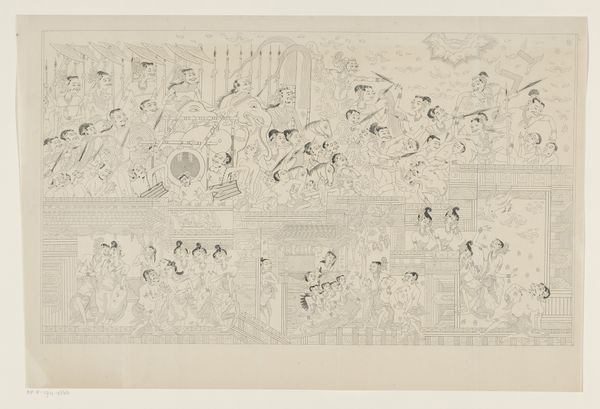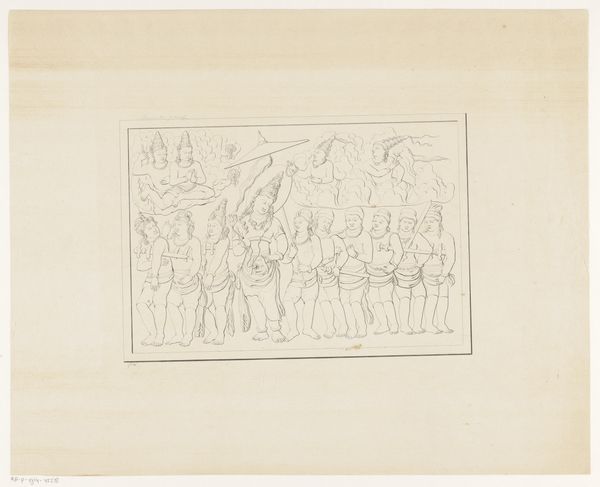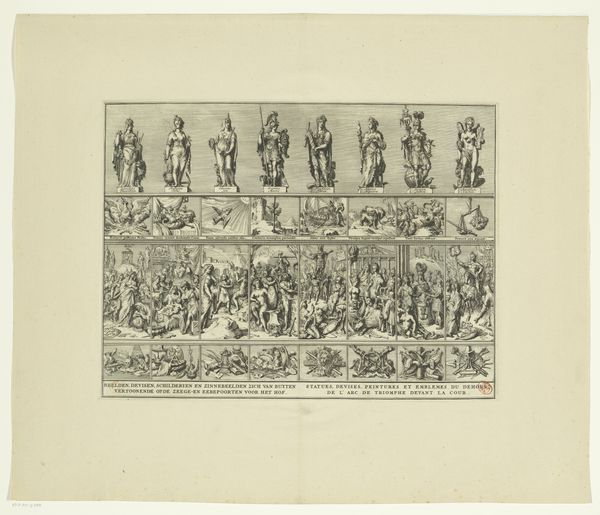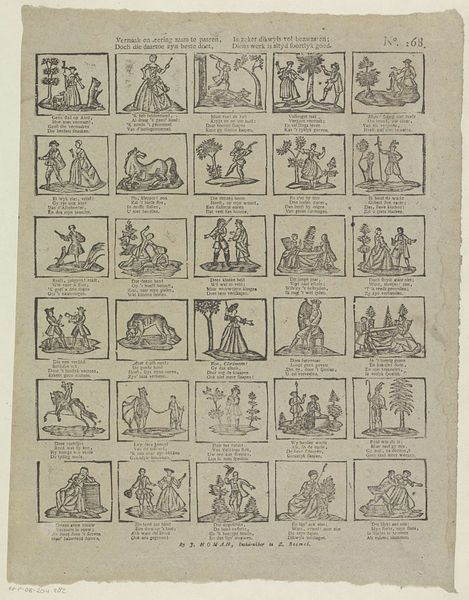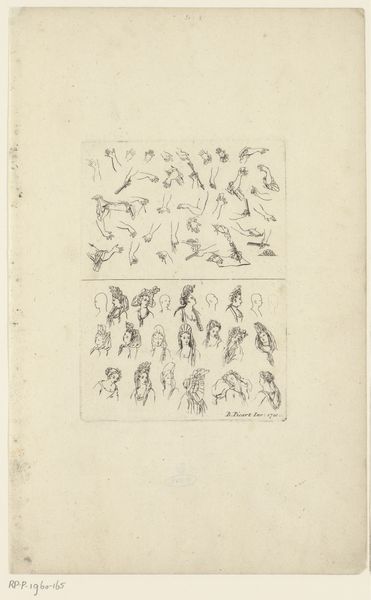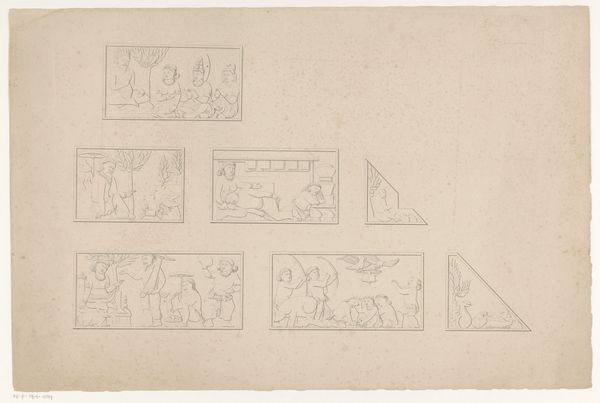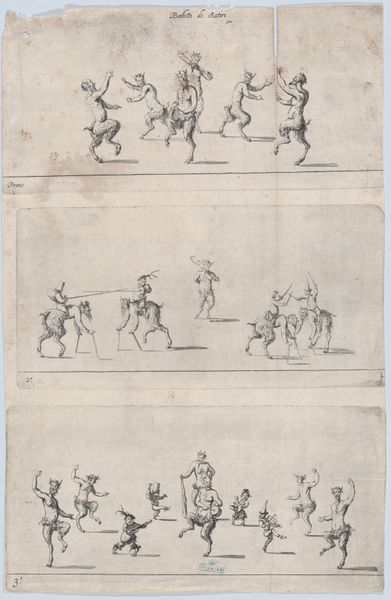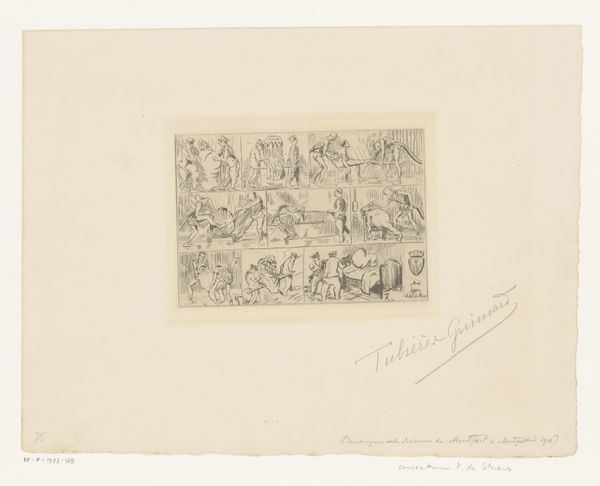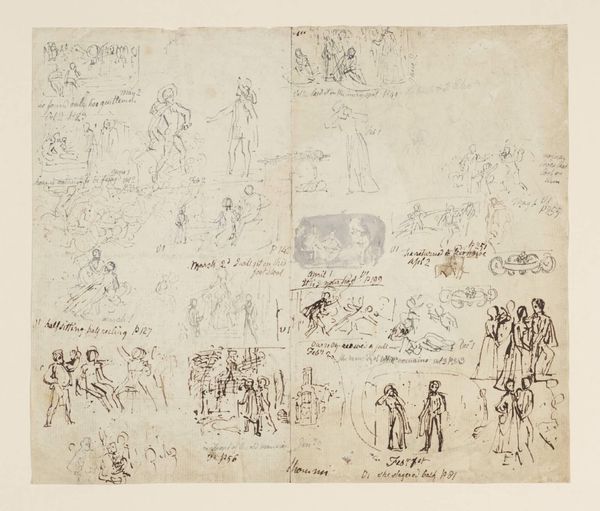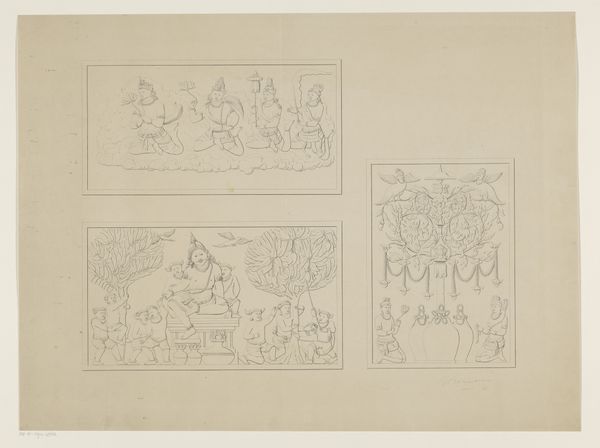
Plate with Ten Bacchanal Scenes 1770 - 1824
0:00
0:00
drawing, print, etching, intaglio
#
drawing
#
neoclacissism
#
allegory
#
narrative-art
# print
#
etching
#
intaglio
#
figuration
#
history-painting
Dimensions: sheet: 8 7/16 x 11 1/16 in. (21.5 x 28.1 cm) plate: 7 1/16 x 9 3/4 in. (17.9 x 24.8 cm)
Copyright: Public Domain
Curator: Welcome! Here we have "Plate with Ten Bacchanal Scenes" made by Jean Philippe Guy Le Gentil, comte de Paroy, sometime between 1770 and 1824. The technique used involves etching and intaglio, resulting in these delicately rendered prints. Editor: My initial reaction is a sense of organized chaos. Ten little windows into scenes of revelry, all crammed onto one plate. It feels like an anthropologist’s notes on a particularly wild party. Curator: Precisely! It speaks to the Neoclassical interest in cataloging and classifying the ancient world. De Paroy presents us with a range of scenes associated with Bacchanalia – festivals in honor of Bacchus, the Roman god of wine and ecstasy. How do you see these scenes operating in terms of gender or social power? Editor: The interesting thing is that there's often a tension, sometimes a direct confrontation, between figures coded as male and those coded as female. Even figures riding a chariot appear whipped. And, indeed, throughout the plate, bodies are pushed, pulled, and generally manipulated within ambiguous, unstable contexts. I'm curious if the "plate" form of this artwork was intentional to imply or evoke some form of discipline and rigid organization of an inherently chaotic form. Curator: That's insightful. These depictions emerged in a period deeply invested in revisiting and reinterpreting classical ideals. Consider the broader cultural climate: revolutionary fervor clashing with entrenched power structures. These Bacchanal scenes weren't just innocent celebrations of pleasure. Editor: They're loaded. The artist must have been commenting on class structures. But also thinking about individual rights vs a controlling central entity during such a transformative time of upheaval, like France after its own Revolution. These scenes have the whiff of a critical eye assessing, but not glorifying, past hedonism. Curator: It’s a useful tension, offering potential allegories on contemporary sociopolitical events through the lens of historical narrative. Editor: Definitely. The scale also surprises me. Given the grandiosity often associated with history painting, seeing these moments condensed and multiplied makes them feel almost… satirical? A reminder that history, even the wild parts, can be repackaged and commodified. Curator: Well put. I agree that it’s the format itself – a collection, a plate – which shapes how we view and engage with these glimpses into a Bacchic world. Editor: A powerful commentary on our urge to both partake in and control our histories. Thank you for shedding light on these many layers, both historical and philosophical. Curator: My pleasure. Thank you for this insightful deconstruction.
Comments
No comments
Be the first to comment and join the conversation on the ultimate creative platform.
